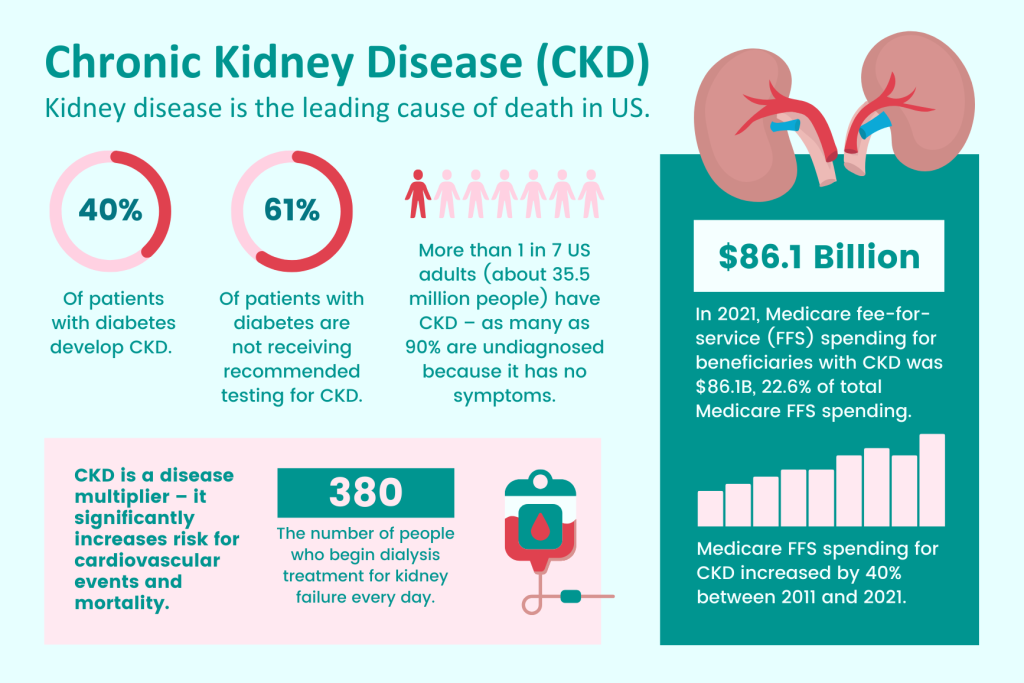September 25, 2024
By: Autumn Orser, MD
Download the quick guide: CHPA Kidney Health Evaluation KED for Patients with Diabetes Quick Guide

Chronic Kidney Disease (CKD) affects more than 1 in 7 adults in the US, but up to 90% of those people don’t know they have CKD. Why? CKD has no symptoms. That’s why annual screening for at-risk patients is critical.
Who’s at risk for developing CKD? Patients with diabetes. 40% of patients with diabetes develop CKD during their lifetime.
Why does CKD matter? It is a leading cause of death in the US and accounts for nearly ¼ of Medicare Fee for Service (FFS) spending at $86.1 billion every year.
How do we screen for CKD? We utilize the Kidney Health Evaluation for Patients with Diabetes (KED). KED is a HEDIS measure and is used to calculate our STARS ratings. KED consists of both an estimated glomerular filtration rate (eGFR) and a urine albumin creatinine ratio (uACR). uACR can either be the actual uACR test or a urine albumin and urine creatinine. It’s important to test for both because eGFR tests for kidney function and uACR tests for kidney damage.
Besides screening for CKD, what else can we do to help patients with diabetes?
- Educate patients on how diabetes can affect their kidneys
- Remind patients that controlling blood pressure will help protect their kidneys
- Help patients control their blood glucose through medication optimization
- Remind patients to take medication as prescribed, especially ACE inhibitors and ARBs
- Make sure patients know to avoid NSAIDs
- Coordinate diabetic care with specialists as needed
- Follow up with diabetic patients frequently to fine-tune their medication regimen and lifestyle changes

Download the quick guide (above): CHPA Kidney Health Evaluation KED for Patients with Diabetes Quick Guide




